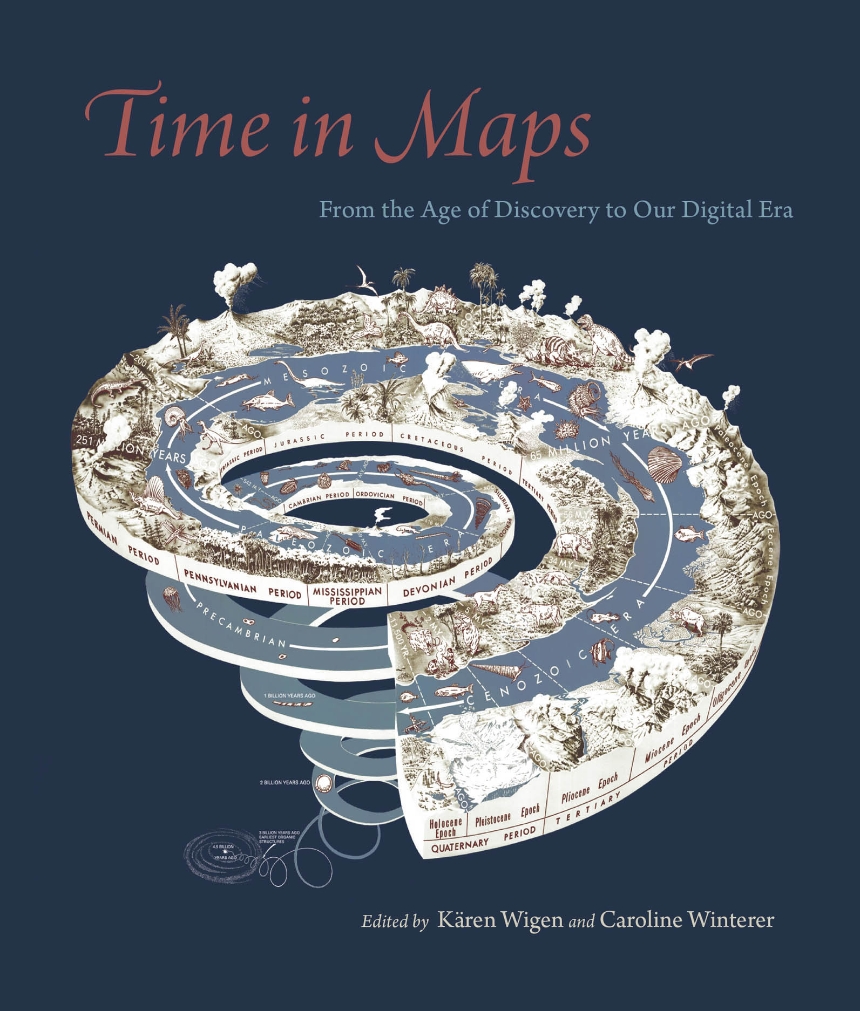Time in Maps
From the Age of Discovery to Our Digital Era
Maps organize us in space, but they also organize us in time. Looking around the world for the last five hundred years, Time in Maps shows that today’s digital maps are only the latest effort to insert a sense of time into the spatial medium of maps. Historians Kären Wigen and Caroline Winterer have assembled leading scholars to consider how maps from all over the world have depicted time in ingenious and provocative ways.
Focusing on maps created in Spanish America, Europe, the United States, and Asia, these essays take us from the Aztecs documenting the founding of Tenochtitlan, to early modern Japanese reconstructing nostalgic landscapes before Western encroachments, to nineteenth-century Americans grappling with the new concept of deep time. The book also features a defense of traditional paper maps by digital mapmaker William Rankin. With more than one hundred color maps and illustrations, Time in Maps will draw the attention of anyone interested in cartographic history.
Focusing on maps created in Spanish America, Europe, the United States, and Asia, these essays take us from the Aztecs documenting the founding of Tenochtitlan, to early modern Japanese reconstructing nostalgic landscapes before Western encroachments, to nineteenth-century Americans grappling with the new concept of deep time. The book also features a defense of traditional paper maps by digital mapmaker William Rankin. With more than one hundred color maps and illustrations, Time in Maps will draw the attention of anyone interested in cartographic history.
272 pages | 25 color plates, 80 maps | 8 1/4 x 10 | © 2020
Geography: Cartography
History: General History
Reviews
Table of Contents
Foreword by Abby Smith Rumsey
Introduction: Maps Tell Time
Caroline Winterer and Kären Wigen
Chapter 1: Mapping Time in the Twentieth (and Twenty-First) Century
William Rankin
Part I: Pacific Asia
Chapter 2: Orienting the Past in Early Modern Japan
Kären Wigen
Chapter 3: Jesuit Maps in China and Korea: Connecting the Past to the Present
Richard A. Pegg
Part II: The Atlantic World
Chapter 4: History in Maps from the Aztec Empire
Barbara E. Mundy
Chapter 5: Lifting the Veil of Time: Maps, Metaphor, and Antiquarianism in the Seventeenth and Eighteenth Centuries
Veronica Della Dora
Chapter 6: A Map of Language
Daniel Rosenberg
Part III: The United States
Chapter 7: The First American Maps of Deep Time
Caroline Winterer
Chapter 8: How Place Became Process: The Origins of Time Mapping in the United States
Susan Schulten
Chapter 9: Time, Travel, and Mapping the Landscapes of War
James R. Akerman
Acknowledgments
List of Contributors
Index
List of Contributors
Index
